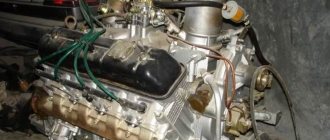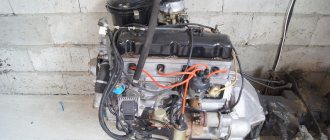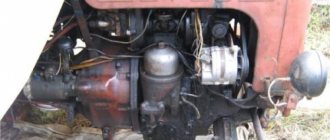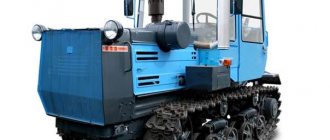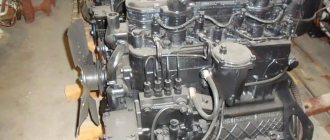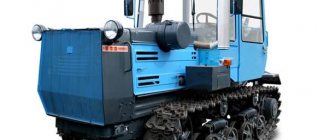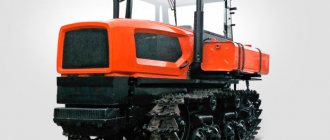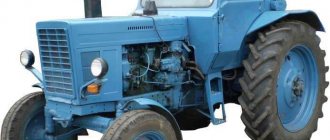The GAZ car brand is known all over the world. In recent decades, the 406 engine produced by the Zavolzhsky Motor Plant has been installed as a power plant on the main products of this automotive giant. The design of this power unit was developed over several years. The beginning was made at the end of the last century, it was then that the basic concept of the ZMZ 406 was formulated. Today it is a promising energy-rich unit capable of developing power up to 150 hp. With. (110 kW).
History of the creation of ZMZ 406
The Zavolzhsky plant engine number 406 begins its history from the very end of the eighties. At the engine design stage, it was clear that the power unit would become a promising invention. This conclusion could be safely made taking into account the advanced trends in engine building that were embedded in its creation.
The latest achievements in engine building at that time were considered:
- electronic control of processes occurring in the power unit;
- sixteen valve cylinder head;
- installation of an injection system to power the internal combustion engine;
- the use of a cast iron block implied a long service life of the internal combustion engine, taking into account two repair borings for cylinders and a crankshaft of three sizes.
The first prototype was assembled in 1989, then the Zavolzhsky Motor-Building Plant and the Gorky Automobile Plant were in close cooperation. GAZ intended to get a new engine for the promising new Volga model - Gas 3105.
On the eve of 1991, the engine underwent every conceivable and unimaginable test. It was completely ready for mass production. But it was 1991, the collapse of the country and the collapse of the economy could no longer be prevented. With great difficulties, in difficult economic conditions in 1992, the Gorky Plant sent an experimental batch of engines to the OPP.
A year later, the assembly of motors in small batches began. And already in 1994, the 406 engine received registration for the Gas 3102 Volga. And a year later this engine was installed on GAZELLES. It should be noted that the engines of those years had carburetor and not injection power. Also in 1995, the Zavolzhsky plant produced several prototypes of the ZMZ 406 with an injection type of power supply.
By the end of 1996, the assembly of ZMZ 406 was transferred to the main conveyor. In 1997, full-scale serial production of the new internal combustion engine began. In parallel with the work of the main conveyor, engineers and designers work. They are looking at various engine upgrades. As a result of their work, modernized power units ZMZ 409 AND ZMZ 405 will soon appear.
Owner reviews
There are many reviews about 406 engines on the Internet. Opinions are very different, some cannot get enough of such a reliable and powerful engine; they have already driven 80–90 thousand kilometers on it without any problems. But there are other opinions that describe frequent breakdowns, oil leaks and other malfunctions.
In one of the reviews, the owner writes that he often has to tow other cars in his Volga, including heavier Gazelles. The engine pulls great and has plenty of power.
But he also notes the frequent failure of control system sensors; he considers the reason to be the low quality of manufacturing of domestic devices and advises switching to imported ones. Many owners write about shots in the muffler and problems with starting the engine. The expression “it starts, then it doesn’t” is often encountered, but there are reviews that note good starting in frosts of −30 °C and below. Perhaps some people came across a successful engine, but others did not. Proper operation and maintenance of the engine certainly matters.
Main features of the ZMZ 406 internal combustion engine
The power unit of the 406 model, produced by the Zavolzhsky plant, which produces automobile engines, can safely be called a pioneer of the domestic engine industry. It was on the ZMZ 406 engine that some of the advanced technologies of world engineering leaders were used for the first time. But let's talk about all this in order.
Cylinder block
The internal combustion engine cylinder block is cast from highly durable cast iron. Because of this, the total mass of the product has increased, but there is no need to use replaceable liners (cylinders). Also in favor of cast iron as a product material is the special rigidity and strength of the structure.
DOHC system
For the first time in the domestic engine industry, the DOHC system is used in the engine gas distribution system. Where there are two overhead shafts. One shaft has eight valves and is responsible for the intake of the combustible mixture. The second shaft with eight valves is responsible for the exhaust gases.
Cylinder head
As a result, each individual cylinder has two valves for exhaust and two for intake. ZMZ 406 was the first domestic power unit on which a sixteen-valve cylinder head was installed. The number of valves doubled compared to previous engines increases the possibility of purging the combustion chamber during the release of exhaust gases. And while filling the cylinders with the combustible mixture, the filling coefficient is multiplied.
The cylinder head valves on this engine are equipped with hydraulic pushers. This mechanism is used for the first time in the domestic engine industry. Hydraulic pushers automatically adjust the thermal clearances in the valves, thereby eliminating periodic, manual adjustment of the valves.
Timing drive
The timing drive here is chain driven. The chain resource according to manufacturers' requests is 200 thousand km. There are known cases of chain service over a period of 500 thousand km. But there have been cases when the timing chain broke in less than 100 thousand km. Therefore, it is necessary to inspect the timing chain for mechanical wear and damage after a mileage of 70 thousand km. However, if the chain breaks there will be no major damage, the 406 valve motor will not bend. The timing drive is two-stage; the first fuel mixture distribution shaft is driven from the crankshaft sprocket, and from it the shaft responsible for the exhaust gases is driven.
Also, it was on the ZMZ 406 that a hydraulic chain tensioner was used for the first time in the Russian engine industry. Its functions include maintaining optimal voltage for the timing drive. Subsequently, this innovation was adopted on many power units.
Other Features
A special feature of this engine is its short piston stroke of 86 mm, compared to a cylinder diameter of 92 mm. This design contributed to an increase in the compression ratio. The compression ratio of ZMZ 406 is 9.3:1. This approach helps to increase the efficiency of the power unit.
Also, an innovation on the ZAZ 406 engine is the use of an injection power system and the use of an electronic system that controls fuel injection and a contactless ignition system
Popular mistakes made by motorists
The pursuit of increased power for some motorists comes down to just reworking the ZMZ 406 engine. But not all modifications are good. And some are harmful, this is what reverse tuning or anti-tuning consists of:
- There are rumors on the Internet that you can increase engine power by reducing the mass of the flywheel. At the same time, the authors point out that the flywheel takes away power and increases the weight of the engine. In fact, the flywheel stores the energy that this engine receives during the “power stroke” to complete the remaining cycles in a four-stroke engine. As the number of cylinders increases, the relative mass of the flywheel decreases, but this occurs due to a change in the number of power strokes per revolution of the crankshaft, since more pistons are involved in the work. Ideally, if you increase the number of working cylinders to infinity, then the flywheel will not be needed at all.
- There are experts who recommend installing air swirlers in the intake system. But such specialists do not understand that when the air flow moves, a turbulent flow regime is observed. Turbulence by definition is a movement with an eddy flow, as Bernoulli proved more than 150 years ago. Excessive interference will only reduce the amount of air charge and reduce power, which will also affect the efficiency of the engine.
- Recently, ideas have also appeared to heat the air at the intake - they say that the 406 engine will have an injector increase in power. But this is not true. The air charge density decreases with heating and constant pressure. Consequently, its total quantity decreases. And this leads to the fact that the pressure drops during combustion of the mixture, and instead of increasing, the power decreases.
- There are also authors who have been saying for more than forty years that water should be fed droplets into the intake tract of the ZMZ 406 injector. But remember that designers are looking for ways to separate fuel and water so that the combustion process is more intense. Water entering the cylinder at high temperatures will begin to cause intense corrosion. When fuel burns, the exhaust gas contains carbon monoxide and water vapor. Those who have been using motors for quite some time know that the ZMZ 406 engine does not need to use ways that impair its reliability.
- There is also a group of “specialists” who recommend optimizing the engine by replacing the hydraulic chain tensioner. They advocate installing an electric tensioner, and the circuit diagram of the vicious device should be purchased from them for a lot of money. It’s already absurd to pay to ruin the power plant.
Therefore, when listening to the advice of various specialists, you should remember that the designers at ZMZ understand their business much better than ordinary people. It’s not for nothing that they refuse many ideas that will ruin the engine.
Modifications of the ZMZ 406 engine
In general, there is no power unit under the exact marking ZMZ 406. This is a generalized name for several engines that are very similar to each other.
Here are their main differences:
- ZMZ 4061 10 is a 16-valve 2.3-liter engine with a compression ratio of 8:1. The power system has a carburetor. Such a low compression ratio allows the use of gasoline with an octane number of AI 76 as fuel.
- ZMZ 4062 10 is the same 16-valve engine with the same volume. Only the compression ratio of this engine is 9.3:1. The power supply system of this internal combustion engine is an injector and electronic fuel injection control.
- ZMZ 4063 10 this engine differs from the previous one in that it has a carburetor in the power system. The compression ratio of 9.3:1 guarantees smooth operation of the internal combustion engine on AI 93 gasoline.
Carburetor ICE models differ significantly in power from injection foreign analogues. For example, internal combustion engines produced in Europe with a volume of 2.3 liters develop power of up to 150 hp, power and torque of more than 200 Nm. The power of domestic carburetor ZMZ 406 with the same volume is only 100 liters. It was possible to achieve the best technical indicators by creating the injection model ZMZ 406. Its technical characteristics are close to European indicators.
Engine tuning
Tuning ZMZ 406 is a way to change the output data. Many drivers are looking for ways to improve the performance of their cars.
Some are not satisfied with the available power, others are embarrassed by the gluttony of the engine, others simply want to distinguish themselves by choosing one or another option that they want to optimize.
The first thing powertrain specialists do is increase power:
- You can simply bore the cylinder and use larger diameter pistons. But this path is fraught with a decrease in the strength of the block.
- More often they go the other way - they force it by increasing the air supply using mechanically driven turbines or using turbocharging.
The first way is simpler, but it should be taken into account that it is necessary to create a mechanism with a high gear ratio - the turbine speed is at the level of 10-15 thousand revolutions per minute. Such a drive, boosting the engine, creating tuning of the ZMZ 406, is difficult to perform. More often they go the route of using a turbocharger.
The turbocharger uses exhaust gas energy to operate. ZMZ 406 turbo, a gas inlet to the turbocharging system is installed on the exhaust part. There is also a compressor on the same shaft with the turbine, which pumps a clean charge of air into the cylinders of the ZMZ 406 engine. The filling increases. The cyclic fuel supply increases proportionally, which leads to an increase in the amount of working mixture in the cylinder, and, accordingly, the gas pressure also increases, which leads to an increase in torque. Further, the power also increases.
The theory of internal combustion engines states that an increase in power during turbocharging is accompanied by a decrease in specific fuel consumption. ZMZ 406 tuning in this way allows you to improve not only the dynamics of the car, but also improve its efficiency.
In the eighties of the last century, another direction of supercharging was studied - this is dynamic supercharging, the essence of which was to select the parameters of the intake system so that the pulsation frequency of the air flow at the intake corresponds to the resonant frequency of the system itself.
Mathematical models were proposed to allow one to calculate the optimal diameters and lengths of the intake system. A number of specialists also installed mechanical resonators, which, through special membranes, transmitted impulses from the exhaust system to the intake system. This path allows you not to change the 406 engine radically, but at the same time achieve an increase in power and a decrease in specific fuel consumption.
The ZMZ 406 engine can be modified even more simply. It is enough to polish the inlet and outlet channels in the power system. This optimization, when combined with a GAZelle 406 engine, allows for improved dynamics. The combination of ZMZ 406 on a UAZ with polished channels will pleasantly surprise the user; the car will pleasantly resemble an energy-rich passenger car.
Technical data ZMZ 406
- Manufacturer ZMZ 406 Zavolzhsky plant for the production of automobile engines. Release period from 1997 to 2008.
- A four-stroke gasoline engine with an in-line arrangement of four cylinders.
- The material used to make the BC is a particularly durable cast iron alloy.
- DOHC gas distribution system with two timing shafts and 16 valves. The timing chain drive has two stages, equipped with a hydraulic tensioner.
- The ZMZ 4062 model has an injection power system. The ZMZ 4061 and ZMZ 4063 are equipped with a carburetor system.
- The piston stroke of this internal combustion engine is 86 mm, the diameter of its cylinders is 92 mm.
- The 4061 model has a compression ratio of 8:1, while the 4062 and 4063 models have a compression ratio of 9.3:1.
- The exact volume of the internal combustion engine is 2286 cubic centimeters.
- The fuel used is AI 76, AI 92 depending on the compression ratio.
- European compliance standards for toxic emissions for the injection version of ZMZ 4062 Euro 2 and Euro 3.
- The weight of the power unit is 185 and 187 kilograms.
Power
ZMZ 4061 at 4500 rpm, equal to 100 l., forces, ZMZ 4063 at 4500 rpm, equal to 110 l., forces, ZMZ 4062 at 5200 rpm, equal to 145 l., forces. Torque 177, 186, 201 Nm at 3500 and 4000 rpm, for the corresponding ZMZ models.
Fuel consumption
Fuel consumption when driving in city mode is 13.5 liters per 100 km, mileage, on the highway 8.8 liters, total fuel consumption is 11 liters per 100 km, mileage. The data corresponds to the consumption of Gas 31105 with manual transmission.
How many liters of oil and what kind to fill?
The permissible consumption of motor lubricant is 0.1 liter per 1000 km, mileage. Types of oil used: 15W40, 10W40, 20W40, 10W30, 5W40, 5W30. Engine oil volume is 6 liters. To replace, take 5.4 liters. Replace engine lubricant every 7 thousand km.
Engine life
According to manufacturers, the operating life of the engine is 150 thousand km. In reality, with careful driving and proper timely maintenance, this figure can be twice as high.
Advantages and disadvantages
A negative feature of the ZMZ 406 power drive is the low quality of casting and poor technical solutions:
- high oil consumption due to unfinished ring design;
- low timing life of the drive due to the tensioner, collapsible block star and bulky design as a whole.
Fuel consumption is high, but this is typical for most truck engines.
But vibrations are reduced, the cylinder head does not unscrew during operation, the gasket does not need to be constantly changed, and the nuts do not need to be tightened. The maintainability of all components is high, the design itself is reliable and simple. The user is spared the need to adjust valve clearances every 20,000 miles.
Intake manifold injector
BC design
The cylinder head is cast from a particularly strong cast iron alloy. Jacket channels pass between the cylinders to circulate coolant. The cylinders are drilled into the BC. In the lower, inner part of the BC there are five supports necessary for installing the crankshaft plain bearings. The bearing caps are made by forging cast iron. They are bored together with the supports. Therefore, the covers cannot be swapped.
Numbers are stamped on the first, second, fourth and fifth covers for correct installation. The third cover is additionally processed at the ends. End machining is needed to install the thrust bearing half washer.
The oil seal holder and crankshaft cuffs, as well as the timing chain cover, are bolted to the ends of the BC. The oil sump is bolted to the bottom of the cylinder block.
There were two ways:
— Leave the old block and, while maintaining the general design of the engine, work on a modern body kit; — Create a completely new motor.
Supporters of the first scheme were found in Ulyanovsk, where the injection UMZ 421 . The motor is good and very convenient from the point of view of the absence of technical problems in installing it on old cars, which greatly pleased the supporters of progress in the camp of GAZ 21 owners (the motor is installed easily and naturally, joining with the original fasteners, gearbox, etc.). ZMZ engineers, in turn, chose option number two and began designing the engine from scratch.
Description of cylinder head design
On the BC, from above, through the gasket, the BC head is bolted. The head is made of aluminum alloy. It houses the exhaust and intake valves. Each individual cylinder has four valves, two exhaust valves and two intake valves. The intake valves are on the right side of the engine, and the exhaust valves are on the left. The valves are driven from two camshafts by hydraulic pushers.
The presence of hydraulic pushers simplifies the maintenance of the car engine. Since the need for periodic adjustment of thermal clearances in the valves disappears. On the surface of the hydraulic pusher there are holes and grooves necessary for the passage of motor lubricant into the pusher.
In the cylinder head, guide bushings and valve seats are inserted into the valve holes. At the bottom of the cylinder head there are combustion chambers, at the top there are supports for the shafts of the gas distribution mechanism. The supports have covers made of aluminum. The first cover along the vehicle, common to the first two supports of both shafts. It contains persistent plastic flanges. They are inserted into the grooves on the shaft journals. Other support covers are processed together with the cylinder head supports. Therefore, they cannot be swapped. All covers, with the exception of the first double, are numbered. The top of the cylinder head is covered with an aluminum alloy cover.
Block head
All engine modifications were equipped with one head, which complied with Euro 2 requirements. With the introduction of additional Euro 3 requirements, it was refined and improved. It is not interchangeable with the previous model.
The new head does not have idle system grooves; now their functions are assigned to an electronically controlled throttle. The front wall of the part is equipped with holes for attaching the protective chain cover, and on the left side there are ebbs for mounting the intake system receiver brackets. The part has pressed cast iron inserts and valve guides. The latter do not require periodic adjustment, since they are driven by cylindrical pushers with hydraulic compensators. The modernized ZMZ-406 head has decreased in weight by 1.3 kilograms. When installing it on the engine, use a metal multilayer head gasket.
Description of the design of ShPG ZMZ 406
The pistons of the 406 engine of the Zavolzhsky plant are made of a special aluminum alloy. All pistons have indentations at the bottom. These recesses prevent the pistons from colliding with the valves if the timing chain breaks. When assembling the engine after repair, for the correct installation of the pistons, there is an inscription “Front” on their wall. This inscription is located above the boss of each piston. The piston must be positioned so that this inscription is in front of the movement of the car.
Each piston is equipped with two compression rings and one oil scraper ring. Compression rings are made of cast iron. The surface of the upper ring, the one that interacts with the cylinder walls, is coated with a thin layer of chromium. This speeds up the ring grinding. The surface of the compression ring located below is covered with a thin layer of tin. The inner surface of this ring has a groove. This ring must be installed on the piston, with the flow upward, towards the bottom of the piston.
The oil scraper ring has three elements: two thin steel disks and an expander. The piston is connected to the connecting rod using a piston pin. Floating connection design. In other words, the finger moves freely both in the piston and in the connecting rod head. The pin is held against lateral displacement by two spring retaining rings installed in the piston bosses.
The connecting rods are made of forged steel and have an I-section rod. In the upper head of the connecting rod there is a pressed bronze bushing. The lower head on the connecting rod has a cover screwed to the connecting rod with two bolts. The covers are processed together with the connecting rods, so they cannot be swapped. The caps and connecting rods are numbered so that they are not confused during assembly. The bolt nuts securing the connecting rod cover are equipped with self-locking threads and do not require additional locking.
The piston bottoms have forced cooling. To do this, holes are drilled in the connecting rod rod and its upper head. Through them, under pressure, motor lubricant reaches the bottom of the piston, thereby cooling it. The weight of the piston and connecting rod assembly must be the same in all cylinders. The permissible difference is 10 grams. The lower head of the connecting rod holds the connecting rod thin-walled plain bearings.
Service
The ZMZ 406 maintenance scheme is quite simple. Motor, unpretentious to consumables. The power unit holds 6 liters of engine oil, but only 5-5.5 liters are required for a change. The oil filter is suitable for both Gazelle and Volga. The recommended maintenance interval is 15,000 km. But, in order to increase the resource, it is recommended to carry out maintenance at 12,000 km if the vehicle is operated on gasoline, and after 10 thousand km - for gas.
The maintenance card is no different from 406, and looks something like this:
- 1000-2500 km or TO-0: oil and oil filter change.
- 8000-10000 km - TO-1: oil change, oil and air filters, spark plugs, high-voltage wires, fuel.
- 25,000 km - TO-2: oil change, oil filter.
- 40,000 km - TO-3: oil change, oil and air filter, spark plugs, high-voltage wires, valve adjustment.
- 55,000 km - TO-4: oil change, oil filter, fuel filter, timing chain and alternator belt replacement.
- 70,000 km - TO-5 and subsequent: oil and oil filter change. Every 20,000 km the fuel and air filters are changed and the valves are adjusted. Every 50,000 km, replace the timing chain.
During scheduled maintenance, lubricant and filters are replaced. Every 65-70 thousand km it is necessary to change the timing belt repair kit. The ZMZ 4062 is equipped with a chain and shoe, as well as drive and drive sprockets.
Every second maintenance requires checking systems such as the valve mechanism, the condition of the electronic powertrain control unit, and the functionality of sensors. The valve mechanism is adjusted after 50,000 km, or earlier if necessary.
Often, by 70,000, hydraulic compensators fail, which need to be replaced all together, since it is unknown when the functional ones will fail. The valve cover gasket is replaced every 40,000 km or when a leak develops under it.
It is recommended to fill the engine with semi-synthetic oil marked 5W-30, 5W-40, 10W-30, 10W-40, 15W-40, 20W-40. To change the oil you will need 5.4 liters, which are poured into the power unit. As practice shows, most motorists perform engine maintenance themselves.
Description of the crankshaft design
The crankshaft material is high-strength cast iron. There are eight counterweights on the crankshaft. It is kept from moving along the axis by thrust washers installed on the journal, which is located among the crankshaft. A flywheel is attached to the rear end of the latter. It is needed to accumulate and release energy when the need arises. A bearing and bushing for the gearbox input shaft are inserted into the hole located in the middle of the flywheel. There are oil lines inside the crankshaft to supply lubricant to the plain bearings, then to the connecting rod and through the connecting rod line to its upper head.
Camshaft
The ZMZ-406 camshaft is made by casting cast iron, followed by processing and hardening. The shafts are driven by a chain transmission. The engine has two shafts, the cam profiles of which are the same size.
The axial displacement of the cams is one millimeter relative to the hydraulic pushers. This factor promotes the rotation of hydraulic drive elements when the engine is running, which significantly affects the wear of the working surface of the pusher and makes it uniform.
The chain drive of the shafts has hydraulic tensioners that operate from oil pressure in the lubrication system. The parts act on the chain directly through plastic shoes that are attached to the axles. After modernization, on ZMZ-406 engines, sprockets were used instead of shoes to increase practicality and durability. The latter are fixed on rotary arms. The sprocket mounting axles are interchangeable with the shoe axles. Instead of an extension of the upper chain tension shoe axis, they began to use a spacer, which is fastened to the block with bolts.
The ZMZ-406 engine is equipped with camshaft drive chains. It is not possible to replace them with chains that were installed on earlier versions of motors.
Features of the ZMZ 406 cooling system
The cooling system of the engine in question is made in a traditional style. The cooling liquid is pumped by a water pump through the BC, BC head, and radiator. The system uses a flat poly V-belt. Such a belt eliminated the possibility of unexpected breakage.
The system includes a thermostat. It directs the flow of coolant in a large or small circle, depending on the engine warm-up temperature. Also, if necessary, pump 406 supplies cooling liquid to the heater, thereby providing warmth and comfort in the car interior. The system includes a temperature sensor that constantly indicates the temperature of the coolant. It allows the driver to constantly monitor the temperature of the internal combustion engine.
Injection motor
In terms of technical characteristics and components, an engine with an injection power system is not very different from the carburetor analogue of the 405 model.
With proper operation, this unit is no less reliable and practical than with a carburetor, and in addition has its own advantages:
- Stable idle speed.
- Low level of harmful emissions into the atmosphere.
- The efficiency of the ZMZ-406 injector is much higher than its analogue with a carburetor, since the fuel mixture is supplied in a timely manner and in the right quantity. Accordingly, fuel savings are obvious.
- Improved fuel economy.
- Does not require prolonged engine warm-up in winter.
Lubrication system ZMZ 406
The motor lubricant, located in the oil pan, is taken through the oil receiving strainer by a gear pump and moved under pressure into the oil filter, where even the smallest impurities are removed. After cleaning, the oil enters the crankshaft channels. Next, it is pumped inside the crankshaft journals, where it ensures reliable lubrication of the rubbing parts. Further, under pressure, through a channel in the connecting rod, oil lubricates the piston pin and part of the oil falls on the piston bottom, thereby cooling it. Having completed its task, the engine lubricant flows into the oil pan and the lubrication process is repeated again.
Oil
The ZMZ-406 power plant is equipped with a combined lubrication system. Under the influence of pressure, the process of lubrication of the piston pins, connecting rod and main bearings of the crankshaft occurs, the support points of the camshafts, the hydraulic valve drive, the intermediate shaft and the driven gear of the oil pump are lubricated. All other parts and elements of the motor are lubricated by spraying oil.
Closed crankcase ventilation with forced exhaust of gases.
Features of the ZMZ 406 electronic ignition system
The electronic ignition on the ZMZ 406 engine is a purely Russian invention. The electronic filling is completely unified. There are several versions of the software electronic unit. The software is installed depending on specific technical characteristics.
For example, the 4061 10 engine has a compression ratio of 8:1, it is designed to run on AI 76. This engine requires software that will facilitate the operation of the engine on this fuel. If an electronic unit with software for a 4061 engine is installed on a 4063 model, the engine will not work normally. This suggests that the ignition units with software are not interchangeable, for example, an engine cannot be installed from 4061 to 4062.
What are the differences between carburetor and injection power systems?
Initially, an internal combustion engine with a carburetor power system was invented. The carburetor was responsible for preparing the composition of the combustible mixture. Later, the injector was invented. The use of an injection system made it easier to start the engine, reduced fuel consumption, and improved engine dynamics. Why did this happen, what is the difference?
This question can be answered by understanding the processes occurring in carburetor and injection power units. The performance of an engine with a carburetor directly depends on the crankshaft speed.
The higher the speed, the greater the fuel consumption and the greater the emission of harmful substances. When you press the gas pedal of a carburetor car, the amount of gasoline vapor in the carburetor increases. It is so excessive that it does not have time to burn out; part of it burns out in the exhaust manifold. Thereby increasing gasoline consumption and the content of harmful substances in exhaust gases.
In an injection engine, everything happens differently. Any light pressure on the accelerator is controlled by the microprocessor. There is an instant correction of the required amount of fuel, which is injected directly into the combustion chamber. Precise correction of distributed injection improves the dynamics and acceleration of the car, reduces fuel consumption and reduces the amount of harmful substances in the exhaust gases.
Carburetor engine
The ZMZ-406 carburetor (402nd engine) has been produced since 1996 and has managed to establish itself as a simple and reliable unit. This device develops a power of 110 horsepower. The fuel consumption of a car with this engine often depends on driving style and operating conditions. The power system of the carburetor unit is quite reliable. With timely maintenance and normal operation, using high-quality lubricants and gasoline, it can travel up to 500 thousand kilometers without serious breakdowns. Of course, with the exception of boring the crankshaft, which is necessary for this unit once every 250 thousand kilometers.
Typical malfunctions of ZMZ 406
Hydraulic tensioner
On the ZMZ 406, the hydraulic tensioner, which ensures normal tension of the timing chain, very often fails. It may jam. As a result, it stops performing its functions and the chain is not tensioned. The chain can stretch, jump and even break. The only good thing about this situation is that the 406 engine does not bend the valves.
Engine overheating
Overheating of the motor of this model is not uncommon. The problem is usually caused by a faulty thermostat or a clogged radiator. If everything is in order with them, then you need to find an air lock in the cooling system.
Loss of traction at idle
Idling failures, engine traction periodically disappears, all this is a sign of imminent failure of the ignition coil. If it is not replaced urgently, the car will finally break down.
High engine oil consumption
There could be several reasons:
- The problem may be caused by stuck oil scraper rings;
- valve seals that have become unusable;
- Also, the reason may be in the oil deflector; usually the oil goes into the gap between the labyrinth plate and the valve cover. To solve the problem, just remove the valve cover, apply sealant and install it in place.
Troubles the engine
To eliminate the problem, in order to eliminate the possibility of valve burnout, you need to notice the compression. If the compression is the same in all cylinders, then you should check the spark plugs. The last in the chain of faults may be the ignition coil.
Engine knock
The ZMZ 406 engine knocks due to failure of the hydraulic compensators. Their working life is about 50 thousand km, after which you don’t need to wait for them to knock, but simply install new ones. If the knocking of the engine is associated with wear or a defect in the ShPG, it is much more serious. A labor-intensive overhaul of the power unit awaits.
Determining a malfunction in the engine management system
This system receives information from various sensors installed on the engine; the normal operation of the power and ignition units depends on it. There is an opinion that a malfunction in this system can only be determined in a technical center using special instruments. This is not entirely true; you can find the problem yourself. The occurrence of a problem is indicated by the “Check Engine” indicator on the instrument panel, which lights up continuously. Each malfunction has its own code, which the system records in memory; the task is to obtain it and determine the cause using a special table.
To find out the code, locate the diagnostic connector located on the right side of the engine compartment. Remove the cover from it and connect contacts 10 and 12 with a copper wire. Now the control unit is in information output mode. Sit in the driver's seat and turn on the ignition, you will see the warning light flash. Your task is to count them. The fault code consists of two or three digits. The number of indicator flashes is equal to a number, then a pause and the next number.
For example, fault code 26 will be displayed like this:
- 2 short flashes, each lasting 0.5 seconds;
- A pause of 1.5 seconds, which means the transition to the next digit;
- 6 short flashes;
- A long pause of about 4 seconds, indicating the end of the code.
The control unit begins transmitting information with code 12, repeated three times. This indicates the serviceability of the diagnostic system. Then the fault code, it is also repeated three times; then move on to the next problem, if there is one. After listing all the codes in memory, the unit will repeat all the information until you remove the jumper from the connector. So you can take your time and check again.
After determining the fault code, look at the table (you can print it out and carry it with you in the glove compartment). You will immediately see what exactly is not working. If the memory is empty, only code 12 is transmitted.
Diagram of the ZMZ 406 motor design
It should be noted that the failure of one of the sensors will not lead to the engine stopping (with the exception of the crankshaft angular position sensor, the failure of which is very unlikely). If a malfunction occurs, the computer switches to the emergency program, the engine runs worse, but you can get to the workshop.


